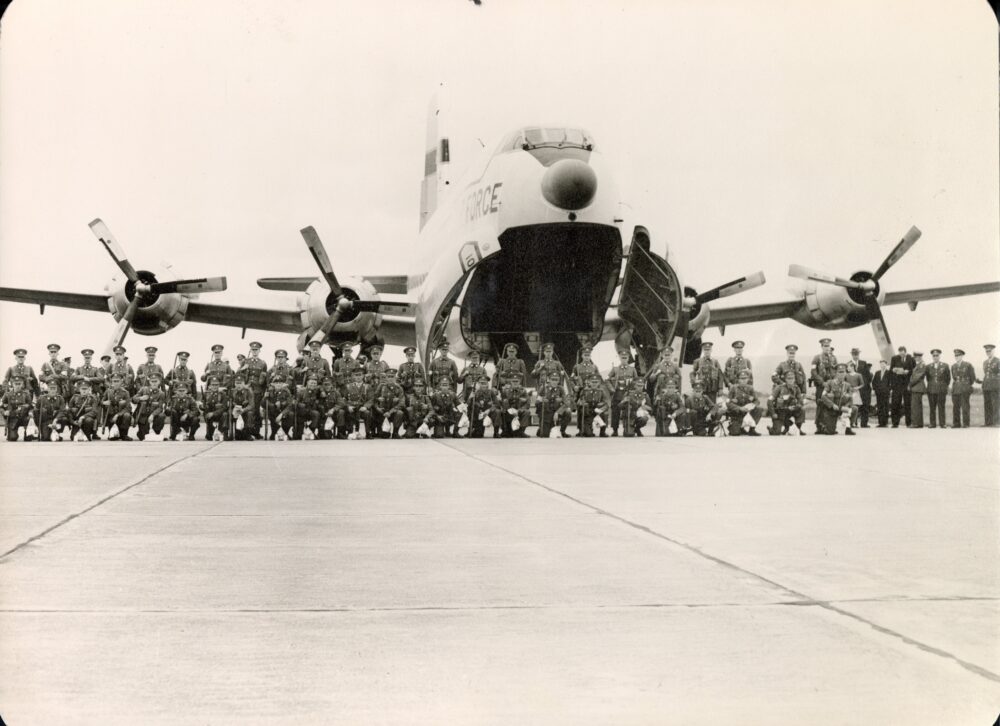Reference Code: IE/MA/OS/ONUC
Dates: November 1959 to October 1969
Creator(s): Defence Forces; ONUC
Level of Description: Sub-Fonds
Extent and Medium: 108 archival boxes enclosing 779 files and bound volumes
Access: Partially Closed
Language: English, Irish, French
Finding Aid: Download
Note: Paper version available in Reading Room
Back
Administrative / Biographical history
The Congo, a former Belgian colony, became an independent Republic on 30th June 1960. Twelve days later, the Congolese Government requested military assistance from the United Nations to maintain their territorial integrity. In response the Security Council called upon Belgium to withdraw its troops from the Congo and authorised military assistance. The United Nations Operation in the Congo (Opération des Nations Unies au Congo) known as ONUC was established by Security Council resolution 143 on 14th July 1960. ONUC was established to ensure the withdrawal of Belgian forces, to assist the Government in maintaining law and order, and to provide technical assistance. The function of ONUC was subsequently modified to include maintaining the territorial integrity and political independence of the Congo, preventing the occurrence of Civil War, and securing the removal of all foreign military, paramilitary and advisory personnel not under the UN command and all mercenaries.
Ireland was one of the countries requested by the United Nations to provide troops to the proposed ONUC mission. They accepted the request and on 19th July 1960 the Irish Government passed the enabling legislation and activated the 32nd Infantry Battalion. On 27th July 1960 the first element of 32nd Battalion took off from Dublin set for the Congo. This was the beginning of a four year commitment to service in the Congo where over 6000 Irishmen served between 1960 - 1964.
During the course of this overseas mission 26 Irish soldiers lost their lives. 9 Irish soldiers died 8 November 1960 during the Niemba Ambush when a patrol of 11 men of the 33rd Infantry Battalion were attacked by Baluba Tribesmen. One of the biggest tests for the Irish serving overseas came in 1961 when 156 soldiers of A Company 35th Battalion took part in the Battle of Jadotville. Between 13-17 September they were attacked by over 3000 heavily armed mercenaries and Katanga Gendarmerie. Shortly after this on 16th December 1961, A Company 36th Battalion (with B Company in support and C Company in reserve) attacked the railway tunnel approaching Elisabethville held by mercenaries and Katanga Gendarmerie. The tunnel was successfully taken. Three Irish soldiers lost their lives during the attack.
Over the course of 4 years 8 Infantry Battalions, 2 Infantry Groups and Armoured Groups/Squadrons served in the Congo. In their first period of service overseas the Irish faced heavy fighting and dangerous operations. Before the last troops left the Congo in June 1964 Ireland had been requested to supply a contingent to a new United Nations mission in Cyprus.
Scope and Content:
This collection is organised by battalion/group. The different overseas contingents are divided into 10 series: 32nd Infantry Battalion, 33rd Infantry Battalion, 34th Infantry Battalion, 1st Infantry Group, 35th Infantry Battalion, 36th Infantry Battalion, 37th Infantry Battalion, 38th Infantry Battalion, 39th Infantry Battalion, and 2nd Infantry Group. Material for armoured car groups/squadrons that served in the Congo are held with the Battalion/Infantry Group they served with. Within each series the files are divided into sub-series based on the type of records (Administrative, Establishment and Organisation, Operations, Finance, Medical, Discipline and Security, Training, Recreation and Logistics).

